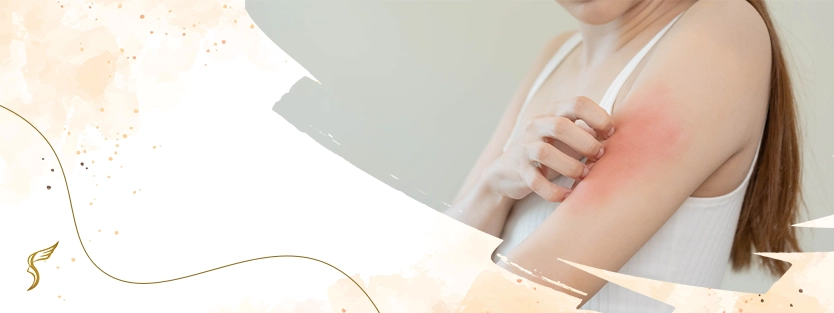Unexpected Causes of Summertime Rashes
Warm weather means spending a lot more time outside. You probably already know the sun can wreak havoc on your skin and take steps to prevent sunburn, but you may not be as aware of another summertime skin issue — rashes.
Here are common but surprising causes of rashes during the summer months.
Hot tub rash (folliculitis)
One or two days after soaking in water that’s contaminated with a common bacterium called Pseudomonas aeruginosa found in the ground and water, you may develop a skin rash that’s known as hot tub folliculitis. It’s more common in hot tubs (hence the name), because hot water breaks down the chlorine that kills bacteria. But the rash can also occur after swimming in a poorly maintained pool or contaminated lake.
Symptoms of hot tub folliculitis include an itchy red rash of tiny millimeter-size bumps that’s worse in areas covered by a swimsuit. You may also notice itchy or tender pimples around hair follicles. While the rash tends to get better on its own, see a doctor if it doesn’t disappear in a few days; you may need to take antibiotics.
The best way to prevent hot tub rash is to check the chlorine and bromine levels in the water before you take a dip. When you get out of the water, shower with soap right away and clean your suit in hot water.
Heat rash
Also known as prickly heat or miliaria, heat rash happens when sweat gets blocked in your pores and builds up under your skin. It’s particularly a problem in babies but can happen at any age, especially when it’s hot and humid outside.
Heat rash stings or itches and usually appears as small red bumps or clear blisters that break easily.
The rash also tends to crop up most in areas where skin rubs together, like the armpits, elbows, and groin. Heat rash typically clears up on its own. You can help ease the itch by removing tight-fitting clothing and cooling your skin off. Taking steps to sweat less, such as wearing loose-fitting, lightweight cotton clothing; using lightweight moisturizers like lotions rather than heavier creams or ointments; and staying in the shade or an air-conditioned building when it’s hottest outside can help prevent heat rash.
Seabather’s Eruption
Notice a rash under your swimsuit after a dip in the ocean? You may have seabather’s eruption, also known as pica-pica (which is Spanish for “itchy-itchy”) or sea lice. This occurs when tiny thimble jellyfish and sea anemones become trapped underneath your swimsuit and release stinging cells that inject a toxin, causing an allergic reaction in your skin. You may notice a prickly sensation while you’re swimming. Within 4 to 24 hours, a patch of itchy red bumps that look a bit like insect bites or hives appear in areas covered by your swimsuit.
Polymorphous Light Eruption
People with a sensitivity to sunlight who are exposed to increasingly intense UV rays in the late spring and early summer may break out in very itchy, hive-like bumps known as polymorphous light eruption (PLE). The rash typically appears on the chest, neck, arms, and face.
Research suggests that 10 percent of the general population is affected by PLE, most likely people who live in northern versus southern climates. Three-quarters of the time it starts in females who are ages 20 to 40, according to other data. Those with fair skin are also more susceptible.
Tinea Versicolor
Tinea versicolor is a fungal skin infection. In general, fungal infections are more common in summer, as fungus thrives in the humidity. When it comes to tinea versicolor specifically, this infection appears as white, pink, red, tan, or brown spots.
This fungus is more classically seen in the summer, and it often appears on the torso as you sweat more.
Having troubles with your skin this summer? Our dermatologists can check them. Schedule a consultation!
Call our Patient Care Lines: (+632) 7-368 5238 l (+63) 917 862 7454 l (+63) 921 217 0517 for inquiries, questions, and appointments or talk to our consultants via LiveChat at https://shinagawa.ph so we can address and answer them for you.





Leave a Reply
Want to join the discussion?Feel free to contribute!